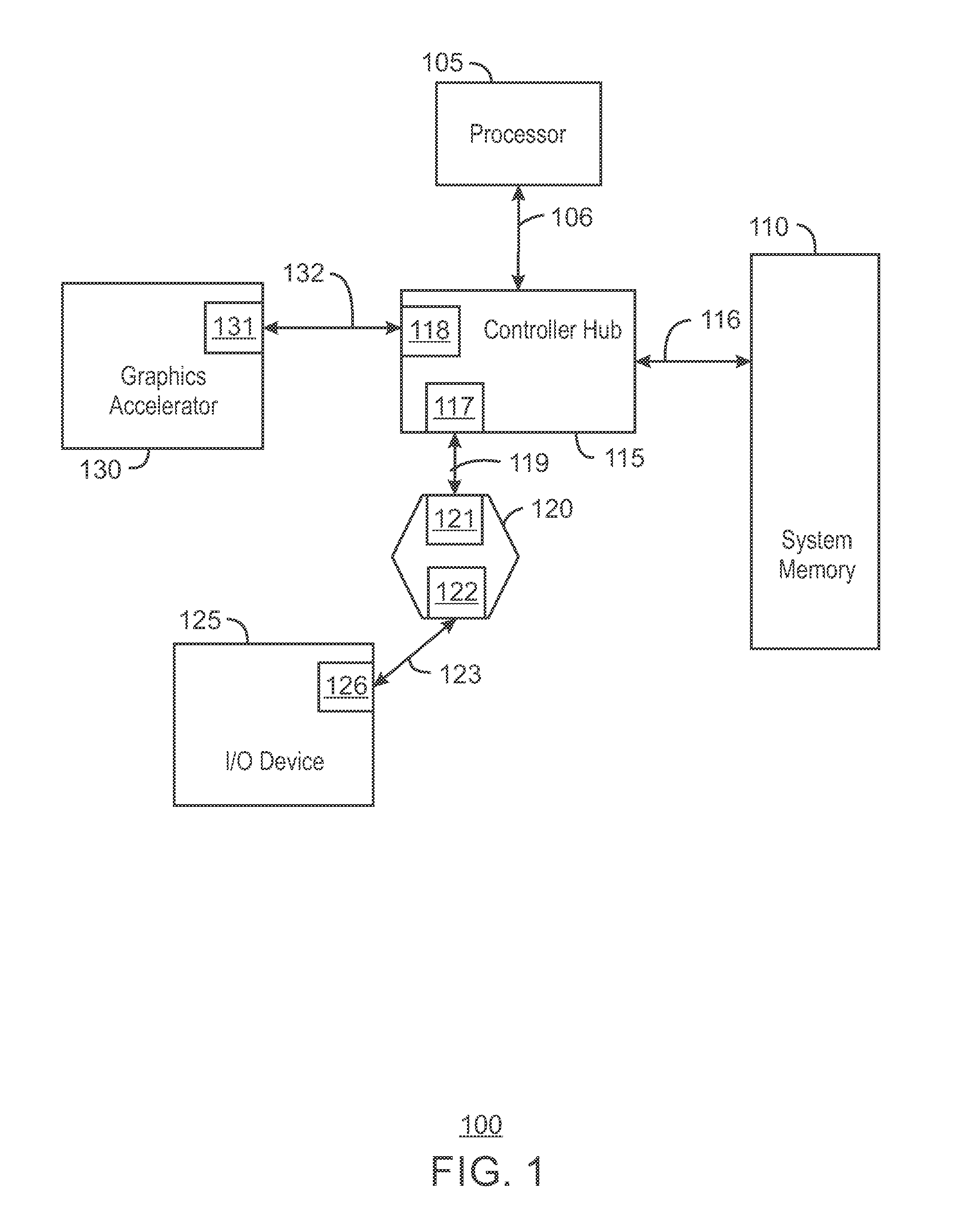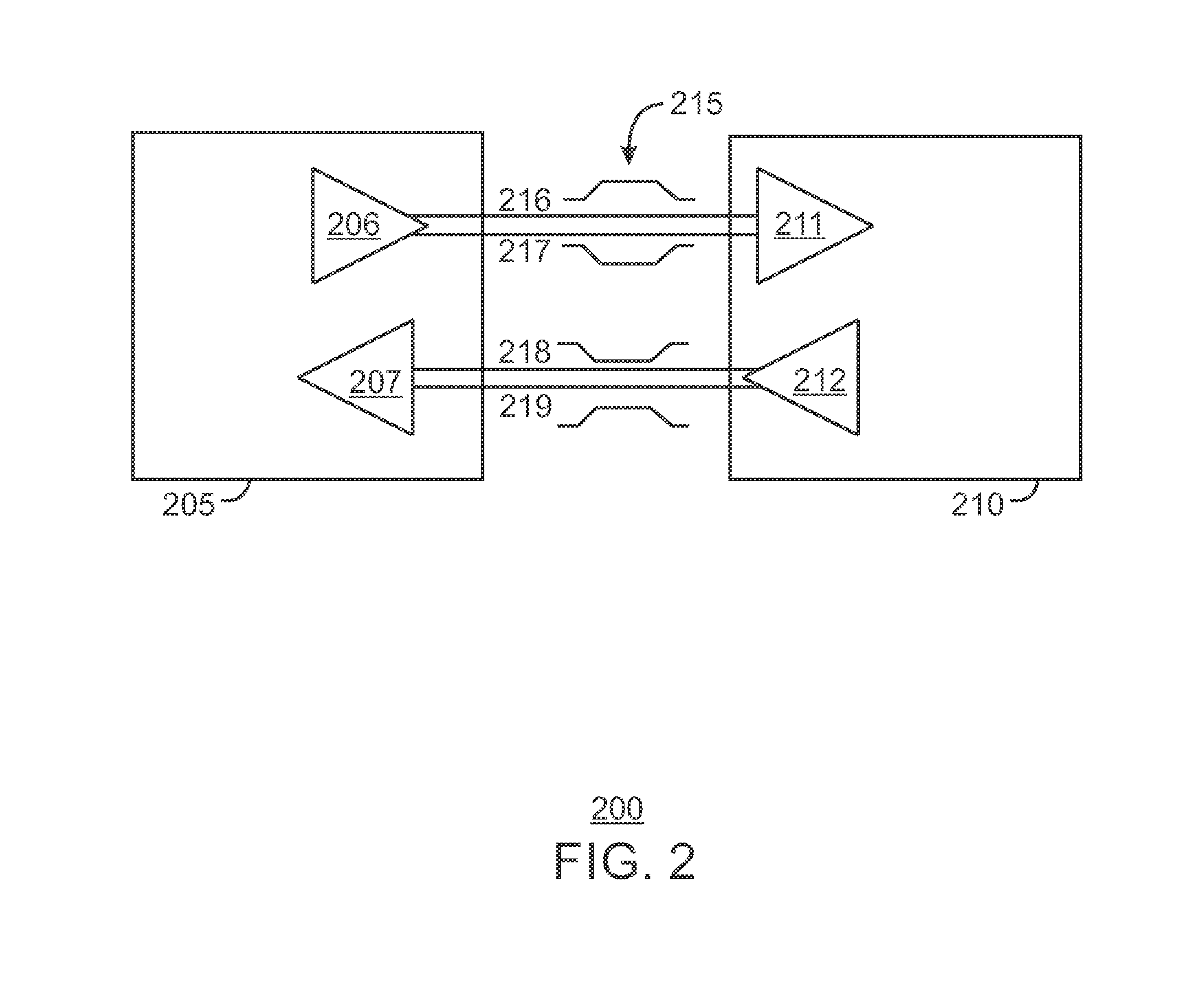Method, apparatus, system for lane staggering and determinism for serial high speed I/O lanes
- Summary
- Abstract
- Description
- Claims
- Application Information
AI Technical Summary
Benefits of technology
Problems solved by technology
Method used
Image
Examples
example 1
[0074]A method of debugging a computing system using a non-core system register, or register means, is described herein. The register means may include a register of accessible by a system agent of the computing device, wherein the system agent is a non-core component of the computing device. Debug data may be generated at agents in the computing system including agents of firmware devices and agents of system software such as drivers of the computing system. The agents have access to the register means, and the register may accessible via a observability fabric means, such as a system interconnect fabric, to enable debug data to be stored in a memory unit and analyzed by debug software and / or hardware. The observability fabric means may include an on-chip analyzer configured to compress and time stamp the debug data.
example 2
[0075]An apparatus is described herein. The apparatus may be configured to receive debug data at a non-core register, or register means. The register may be configured to record the debug data and a memory unit, or memory means, may be configured to receive the debug data via an interconnect fabric, such as an observability fabric, or observability fabric means. The memory unit may store the debug data and may be accessible by debug software and / or hardware to determine the source of the debug data. In embodiments, the interconnect fabric may include analyzer logic, such as an on-chip analyzer, to compress and timestamp the data to be received at the memory unit. The agents may include driver agents of an operating system and / or firmware agents of microcontrollers communicatively coupled to the system. In embodiments, the agents, such as the firmware agents, may have access to the register via a computing system interconnect means, such as the observability fabric discussed above.
example 3
[0076]A computing device is described herein. The computing device may include a driver agent, a firmware agent, and a register means. The driver agent may be driver logic that is accessible by driver code to be executed on a processing element. The driver agent is associated with an operating system of the computing device to generate debug data. The firmware agent may be controller logic to provide second debug data for one or more controllers. The register means, may be a register, or a storage element, disposed in a non-core portion of the computing device, wherein the firmware agents and the driver agents may provide debug data to the register. The register may be configured to record the debug data and a memory unit, or memory means, may be configured to receive the debug data via an interconnect fabric, such as an observability fabric, or observability fabric means. The memory unit may store the debug data and may be accessible by debug software and / or hardware to determine t...
PUM
 Login to View More
Login to View More Abstract
Description
Claims
Application Information
 Login to View More
Login to View More - R&D
- Intellectual Property
- Life Sciences
- Materials
- Tech Scout
- Unparalleled Data Quality
- Higher Quality Content
- 60% Fewer Hallucinations
Browse by: Latest US Patents, China's latest patents, Technical Efficacy Thesaurus, Application Domain, Technology Topic, Popular Technical Reports.
© 2025 PatSnap. All rights reserved.Legal|Privacy policy|Modern Slavery Act Transparency Statement|Sitemap|About US| Contact US: help@patsnap.com



